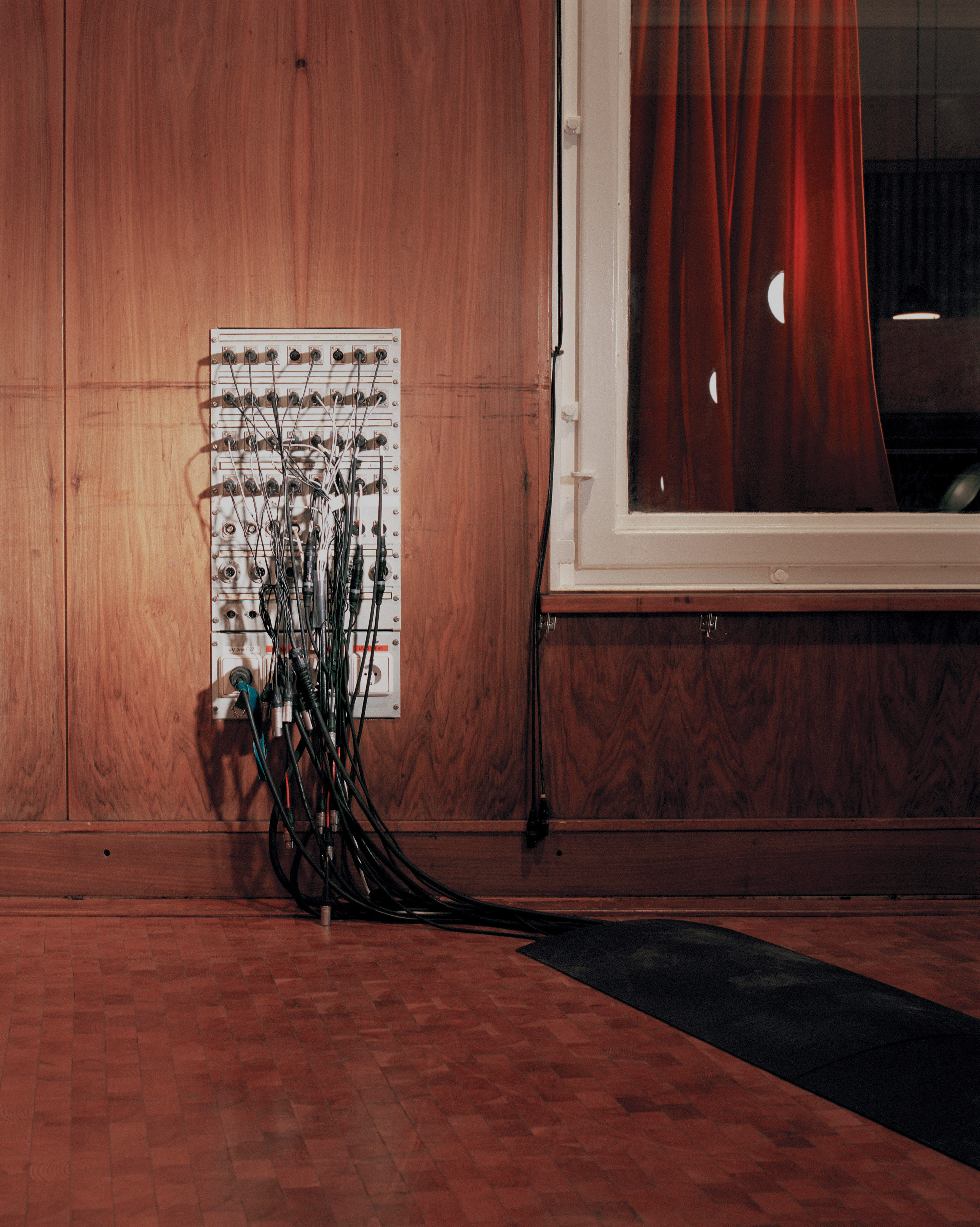Following the success of the Alpha Series line of acoustic treatments, GIK has released their Impression Series. These panel absorber/diffusors are available in six designs: Gatsby Arches, Digiwave, Mod Geometric, 3D Cubes, Checkerboard, and Bubbles. The patterns are precision cut into a rigid layer and are responsible for the majority of the diffusion properties of the treatment. In the US, the five available finishes include: Black, White, Mahogany, Grey Elm, and Blonde. Worth noting: should you ever see these in person or at a trade show, you'll probably agree that the Grey Elm looks much more impressive in person than on the web or in catalogs. Given the right color profile, it could make your room pop. GIK stocks 18 fabrics in house – nine standard and nine upgrade colors. Should none of these shades fit your project, GIK can special order from a large range of Guilford of Maine acoustic textiles. Contact GIK directly for specific fabrics and costs. In addition to the common rectangle panel (23-inch x 45.5-inch), GIK also offers square (23-inch) and narrow (11.5-inch x 45.5-inch) versions in four thicknesses: a 2-inch acoustic panel, 4-inch bass trap, 6-inch bass trap, and a corner bass trap (coming soon).
Internally, the absorption material is renewable, bio-based materials rather than non-renewable, petroleum-based chemicals found in many competitors' products. Specifically, the GIK treatments do not contain phenol, formaldehyde, acrylics, or artificial colors. Your lungs and the environment will thank you. GIK treatments have received the highest (class A) rating possible under the ASTM E84, a test used by fire code officials and regulatory agencies in the acceptance of interior finish materials. If you run a commercial facility, fire ratings are a must. Otherwise, good luck proving your DIY panels are safe when the local fire code inspector demands documentation.
Let's clear up some terminology. In general, when audio engineers talk about bass traps, we think of corner wedges and crate-sized things. GIK calls any panel deeper than 4-inches a bass trap/absorber. Bass traps don't diffuse unless specifically designed to have scattering effects.
So, what did we do, how do they look, and how did they perform? We used the GIK treatments for an iso room. The room's dimensions are about 12 feet x 9 feet, with 12-foot tongue-and-groove wood ceilings. The floor is engineered wood with a small center carpet. Three walls are plaster, while one wall is almost totally glass. We already have two smaller "dead" sounding vocal booths. While those are great for equipment testing, amp isolation, or some voiceover work, we wanted a balanced "live" sound without excessive flutter echo or obvious room reflections. Our first attempt was to cover most of the room with 3-inch 703-type rigid absorber panels. The result was strange sounding, with most mid and high frequencies being sucked away, while lo mids and lows were barely contained. We added moving blankets hanging from stands with little improvement. All this just cluttered the space, making singers feel like they were in some guy's basement with acoustic results that never seemed natural. We started over by using eight of the narrow 4-inch Impression Series panels with the 3D Cube design, Mahogany veneer and black fabric. This pattern tied into the existing stained-glass windows at The Church Recording Studio, prompting many artists to ask if they were custom made for the installation! As an example, GIK panels are prominently featured in The Clark's video, "She's On Fire," filmed here.
In addition to treating the iso booth, we also added some of GIK's 242 Acoustic Panels on the ceiling, four Corner CT Alpha Bass Traps in the corners, and two Spot Panels on the walls. All of this resulted in a controlled, tighter room without unnecessarily dead sound. Flutter echo and ring were gone but a small amount of liveliness remained. The treatments covered a broad frequency range rather than sucking out a small section. Artists liked the look, and we all know that comfortable artists make better records.
Be advised of lead-time required when ordering Impression Series treatment. All of GIK's products are made to order. If you have specific fabric and wood choices that are not in stock, they will need to be put into production, so don't assume that an order madetodaywill shiptomorrow.It's not Amazon; they need to build it. GIK typically requires five to ten business days to build and pack, then ship via FedEx Ground from Atlanta, which will add another one to five working days. These are professional and clean-looking treatments. In my opinion their fit and finish may not be on par with high-end architectural fixtures or offerings from other companies, the Impression Series costs a fraction of what some high-end brands charge. When GIK boasts that dollar-for-dollar their products absorb more sabins (measurement unit of sound absorption) than their competitors, they are not overstating their position! Unless you're an upholsterer or a woodworker with advanced CNC machines, you're not going to make treatments for less money – especially when considering the value of your time. Add the fire-rating certification, and these become a very professional solution at an affordable price. I plan on talking to GIK for a new room build in the near future. Altogether, treating our room was about as expensive as a boutique microphone preamp – but unlike a preamp, the GIK treatment will be evident on every recording.
As of publishing this review the Impression Series absorber/diffusors are now available in 12 designs: Wavy Leaves, Sunrise, Palomar, Braids, Basketweave, Gatsby Arches, Digiwave (horizontal), Digiwave (vertical), Mod Geometric, 3D Cubes, Checkerboard, and Bubbles.




_disp_horizontal_bw.jpg)